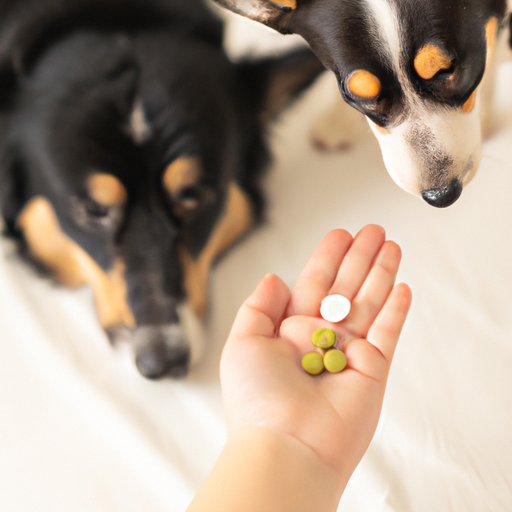
Introduction
Administering medication to dogs can be a daunting task for owners. While pills may be necessary for a dog’s health, it can be difficult to ensure that they are consumed without stress or struggle. However, with the right techniques, giving a dog a pill can be a breeze. This article aims to provide helpful tips and tricks for giving dogs their medication, targeted towards pet owners who may be struggling with the process.
Breaking it down
Breaking pills into smaller pieces can make it easier for dogs to swallow. However, before attempting to do so, it is important to consult with a veterinarian to confirm that the medication can be broken, and that the pieces will maintain their efficacy. For pills that can be safely divided, using a pill splitter or a sharp knife to cut the pill in half can be effective. Make sure to handle the pill carefully and avoid cutting it into too many small pieces that could be easily lost or confused with food.
Hiding it in food
Hiding medication in food can be a useful way to encourage dogs to take pills without even noticing it. A variety of food options can be effective for hiding pills in. Soft cheeses, such as cream cheese or cheese spread, peanut butter, meatballs, and small pieces of chicken or turkey make great options. However, owners should be careful to ensure that the food options selected are safe for their dog. Avoid giving food options that are too large, as this can cause choking, and ensure the pill is completely hidden to prevent the dog from spitting it out.
Making it a ritual
Making the medication process a routine event can help reduce a dog’s stress levels. By creating a daily ritual around administering medication, dogs can become more comfortable with the process. This could start with a treat given before the medication, comforting words or petting during administration, and ending with another treat or play time afterward. By turning medication into an expected part of the day, owners can reduce the chances of their pet becoming stressed or resistant to taking medication.
Using a pill pocket
A pill pocket is a small, treat-like pocket that is designed for hiding pills. These can be found at most pet stores and have proven to be an effective option for difficult-to-administer medication. The treat’s soft, pliable texture makes it easy to wrap around any size pill and can also help to mask the pill’s unpleasant taste. It is important to purchase the appropriate size pill pocket for your dog’s medication to ensure it remains securely wrapped inside the treat.
The “toss and catch” method
For dogs who enjoy playing fetch, the “toss and catch” method can be an effective way to give medication. With this technique, the owner places the pill in the dog’s mouth as they catch a treat or a specially made treat with the pill inside. This technique requires some training, as the dog must be able to catch the treat and swallow it in one motion. It is important to avoid throwing the pill directly at the dog, which could be dangerous or prompt the dog to try to avoid taking the medication.
Liquid medication alternatives
Liquid medication can be an easier alternative for some dogs, as it can be mixed with food or placed directly in their mouth with a dropper. It is important to consult with a veterinarian before administering any medication or supplementing it with food. Ensure the liquid medication is properly measured and mixed with the proper amount of food. While this method may be beneficial for some dogs, others may still be resistant to taking medication through this method.
Consultation with a veterinarian
If all else fails, it is important to consult with a veterinarian for alternative options. A veterinarian may recommend other options such as prescription medication in liquid or pill form, injections, or specialized medication administration processes. It is important to work with the veterinarian to determine the safest and most effective plan for the individual dog.
Conclusion
Giving medication to dogs does not have to be a stressful or daunting experience. By breaking pills down, hiding medication in treats or food, creating a ritual, using a pill pocket or the “toss and catch” method, or even considering liquid medication, owners can make administering medication a positive experience for both themselves and their pets. It is important to remember that each dog is different and requires their own unique approach to medication. If challenges persist, it is always best to seek professional guidance.





